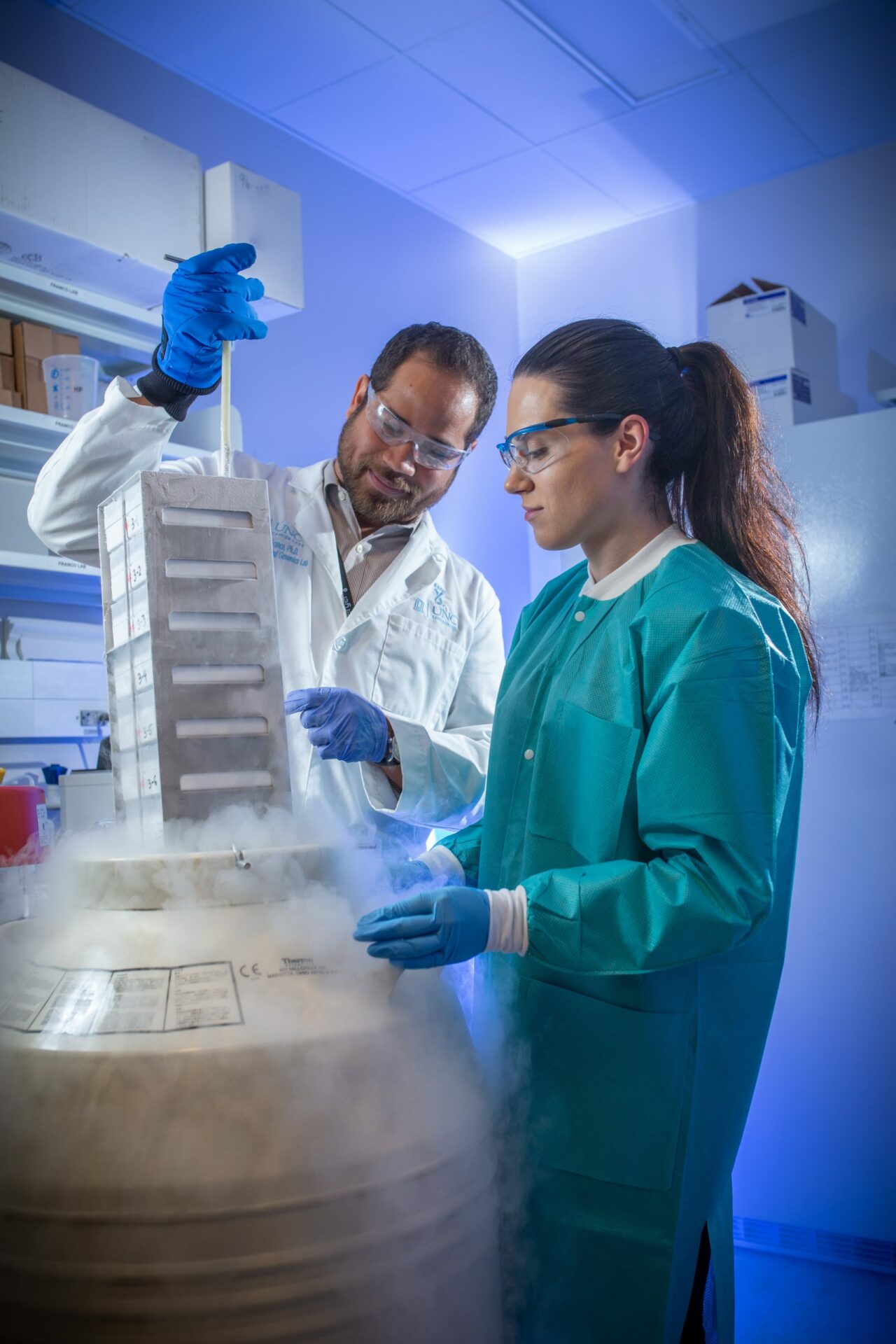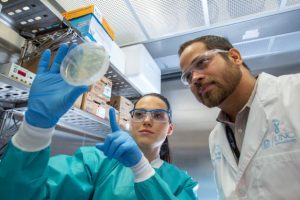 When the first human genome was sequenced back in 2001, the project had taken more than a decade to complete and cost about $1 billion. Today, thanks to advancements in technology and a commitment to funding new research, scientists can sequence a genome in a few hours, for a few thousand dollars. Now, scientists like Hector Franco, Ph.D., are working to harness the power of genomic sequencing to change the game for people with cancer.
When the first human genome was sequenced back in 2001, the project had taken more than a decade to complete and cost about $1 billion. Today, thanks to advancements in technology and a commitment to funding new research, scientists can sequence a genome in a few hours, for a few thousand dollars. Now, scientists like Hector Franco, Ph.D., are working to harness the power of genomic sequencing to change the game for people with cancer.
There is still much to learn about how the human genome works, but we do know our DNA contains genetic instructions that our cells use to make proteins, which carry out all the functions that keep us alive. In addition, some parts of the genome, known as regulatory regions, determine when and where these genetic instructions are carried out. When a gene or regulatory region changes, even a little bit, it can lead to cancer. Franco and his team at the UNC Lineberger Comprehensive Cancer Center are using new sequencing technologies to reconstruct this process by tracing exactly where something went wrong to allow a tumor to develop. To start, they’re focusing on ovarian cancer, which has a five-year survival rate of just under 50%.
“We are focused on how to turn on and off genes. By using various genomic sequencing tools, we find the regions of the genome that contain the instructions for turning genes on and off, and figure out which ones of those are mutated in ovarian cancer cells,” said Franco.
Typically, when studying ovarian tumors, researchers have had to sequence tumors as a collection of cells, which makes it more difficult to pinpoint where the cancer-causing mutation started. Now, thanks to new technology known as “single cell sequencing,” Franco and his team can take a closer look at the root causes of cancer.
 “When women come to our hospital to have surgery to remove ovarian tumors, we get those tumors from the patients who have donated them to research,” said Franco. “Thanks to this new technology, we have the ability to sequence each individual cell in the tumor and identify the various cell types found. We can look inside each of those cells and see what the DNA and molecular characteristics are.”
“When women come to our hospital to have surgery to remove ovarian tumors, we get those tumors from the patients who have donated them to research,” said Franco. “Thanks to this new technology, we have the ability to sequence each individual cell in the tumor and identify the various cell types found. We can look inside each of those cells and see what the DNA and molecular characteristics are.”
This is exciting work because not only will it impact our general understanding of how the human genome is regulated, but the lessons learned while looking into ovarian cancer also can be applied to other types of cancer. Franco also says these discoveries could lead to more personalized cancer treatments.
“These regions of the genome that contain instructions, which we call regulatory elements, are therapeutically tractable. That means we can design drugs to specifically inhibit these regulatory regions of the genome,” said Franco. “If we know which ones are the bad actors in ovarian cancer, then we can try to fix them or reverse what they are doing inside the cells.”
Read more about Dr. Franco’s V-funded work, recently published in Science Direct: https://www.cell.com/molecular-cell/fulltext/S1097-2765(21)00842-X
Franco’s grant from the V Foundation came from the Stuart Scott Memorial Cancer Research Fund, which looks to fund researchers from underrepresented minorities in the scientific field. Franco knows just how important this type of funding is.
Researchers today have capabilities that would have seemed beyond imagination just a few decades ago. But to truly take advantage of these technological advances requires continued investment and innovative ideas. New ideas lead to more lives saved, and every life saved moves us closer to Victory Over Cancer®.




